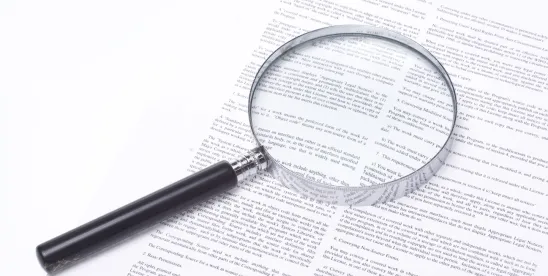Nearly a year to the day after President Trump signed the Small Business Runway Extension Act (Public Law 115-324) into law, on Dec. 5, 2019, the Small Business Administration (SBA) published the final rule implementing the legislation, with the rule changes coming into effect Jan. 6, 2020. 84 Fed. Reg. 66561.
The Act itself consists of only two sentences: the first names the statute, and the second, which contains the effective language, amends the Small Business Act (15 U.S.C. § 632(a)(2)(C)(ii)(II)) by “striking ‘3 years’ and inserting ‘5 years’” in Section 3(a)(2)(C)(ii)(II). This revised methodology extends the time period used to calculate the average revenues of a business for size purposes from three to five years. This extension is of significant consequence to many businesses, as the SBA size standards establish eligibility for many small business assistance programs, including a variety of government contracting set-asides designed to aid small businesses in obtaining federal government contracts.
As we reported in our February 2019 GT Alert, Pro and Cons of the Small Business Runway Extension Act of 2018, the intent of the legislation is to deal with “the ‘Other-Than-Small’ Conundrum.” See H.R. REP. NO. 115-939 at 3 (2018). The “Other-Than-Small Conundrum” arises from the federal government’s recognition of only two categories of businesses – those that are “small” and those that are “other-than-small.” Given this limited view of business size, firms that are newly “other-than-small” because of significant business growth no longer qualify for those small business set-aside procurements upon which their business model was originally based and which may have been principally responsible for that business’s growth. Having graduated from the small category too soon, and no longer eligible for SBA assistance and set-asides, such firms may remain unable to effectively compete in the open market.
On its face, the Act seems to resolve this problem by extending the period to calculate the average revenues, and unquestionably helps businesses that have experienced growth over a five-year period by including earlier years that exhibited lower revenues. However, the legislation could have negatively impacted those businesses that experienced decreasing revenues over the same time frame. The reason is that those businesses would now be required to include the higher revenues of their earlier and more successful years in the calculation of the average annual receipts, causing them to exceed the applicable small business size standard. Indeed, SBA stated that one of the main concerns in comments opposed to the rule change was the disadvantages to firms with declining revenues, even “penalizing” small businesses for having declining revenues. Some commenters contended that the change in the receipts-measuring period primarily benefits growing and more successful larger small businesses by enabling them to maintain their small business status longer and better prepare for a successful transition to the full and open market, but hurts emerging and smaller small businesses most in need of SBA assistance.
In the final rule, SBA acknowledged that the move from a three-year averaging period to a five-year averaging period could, as an unintended negative impact, cause some small businesses close to their size standard limit to lose their small business status immediately or subsequently during the period of declining revenues, and to face a longer period before regaining their small business status.
To mitigate this impact, in the final rule, except for the Business Loan and Disaster Loan Programs, SBA provided a transition period until Jan. 6, 2022, during which time firms will be allowed to choose either the three-year receipts average or five-year receipts average for size eligibility purposes. After that date, firms with at least five years of receipts will be required to use a five-year averaging period. A firm with fewer than five years of receipts will average its annual receipts over its period of existence. SBA specifically rejected using alternate averaging periods on a permanent basis, as that would result in more confusion about how to determine size for federal opportunities.
One other change to the proposed rule SBA made in response to comments was to add language to §§ 121.104(d)(4) and 121.106(b)(4)(ii) to clarify that the former affiliate rule does not permit a business to adjust its receipts when the business sells a segregable division that is not a separate legal entity. SBA concluded it was not logical to allow a business to exclude the receipts of a former division just because that division was sold, since those receipts accrued to the business. SBA concluded there is a difference between the sale or acquisition of a segregable division and the sale or acquisition of a separate legal entity. According to SBA, the sale or acquisition of a division is not a question of affiliation – it simply represents an addition or subtraction to the business itself, distinct from the sale or acquisition of a separate legal entity, which does implicate questions of affiliation.
As noted, the final rule is effective 30 days from publication, on Jan. 6, 2020.




 />i
/>i

